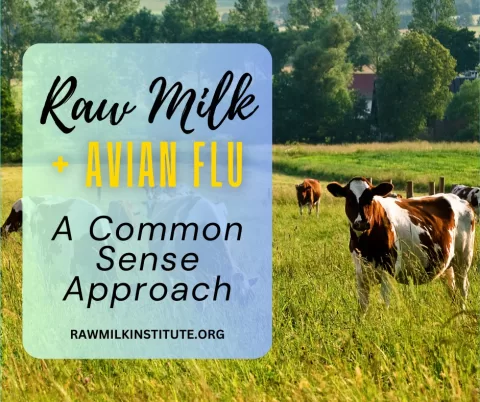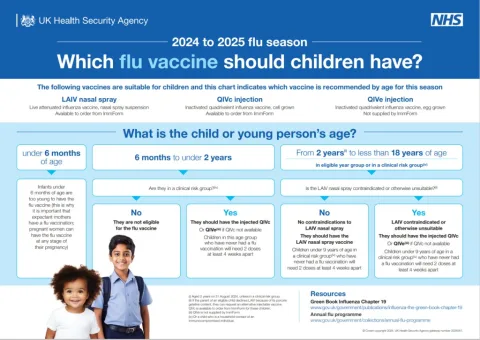Foodborne illness outbreaks remain a significant public health concern, drawing attention due to their alarming potential to affect large populations. Recently, a Salmonella outbreak linked to cucumbers resulted in numerous cases and hospitalizations, raising serious questions about food safety across the nation. Furthermore, an E. coli outbreak traced to romaine lettuce has also been declared over, though the source remains unidentified. As reported by Food Safety News, vigilance is necessary, especially with continuous cucumber recalls highlighting the risks associated with contaminated produce. With the rise of foodborne illnesses, consumers and health officials alike are urged to stay informed and prioritize awareness in food safety practices.
Incidents of foodborne disease outbreaks present a growing challenge to public wellness and food security. The recent headlines surrounding a bacterial infection tied to cucumbers and another concerning E. coli in leafy greens underscore the critical importance of monitoring agricultural products. Such occurrences are significant not only for individual health but also for broader community well-being, sparking discussions about food safety trends and regulations. In light of these events, maintaining vigilance against pathogens in our food systems is essential. This fluctuation in food safety dynamics reflects a pressing need for consistent oversight and transparency in food production processes.
Understanding Foodborne Illness Outbreaks
Foodborne illness outbreaks pose a substantial risk to public health, affecting thousands of individuals each year. These outbreaks arise from the ingestion of contaminated food or water, leading to diseases caused by bacteria, viruses, or parasites. The recent Salmonella outbreak linked to cucumbers serves as a stark reminder of the potential dangers lurking in our meals. With 113 reported cases and 28 hospitalizations, the CDC highlighted the importance of rigorous food safety measures to prevent such incidents in the future.
One of the significant challenges in addressing foodborne illnesses is the difficulty in tracing the source of contamination. In the case of the E. coli outbreak associated with romaine lettuce, for instance, the FDA was unable to identify the specific supplier responsible for the infections. This uncertainty complicates public health responses and emphasizes the need for enhanced tracking systems in the food supply chain, which can help quickly identify and mitigate the spread of pathogens.
Preventing Future Foodborne Illnesses
To reduce the occurrence of foodborne illness outbreaks like those caused by Salmonella or E. coli, consumers and food manufacturers must adhere to stricter safety protocols. Proper food handling practices, including washing fruits and vegetables thoroughly, cooking meats to appropriate temperatures, and practicing cross-contamination prevention, are pivotal in curbing the spread of harmful bacteria. Education and awareness campaigns can play a crucial role in informing the public about these practices.
Moreover, ongoing monitoring of food products is essential. The recent cucumber recalls highlight how quickly a contaminated batch can affect numerous individuals across multiple states. Regular inspections and testing by the FDA and CDC, combined with timely reporting in food safety news, can help ensure that potential outbreaks are addressed before they escalate. Proactive measures are necessary to protect consumers and maintain trust in food safety.
Salmonella and E. coli: Common Culprits in Outbreaks
Salmonella and E. coli are two of the most notorious bacteria associated with foodborne illnesses. The Salmonella outbreak related to cucumbers exemplifies the widespread implications of bacterial contamination in produce. These bacteria can be found in various food items, including fresh fruits, vegetables, and undercooked meats, and can lead to severe gastrointestinal illnesses. Awareness of their presence in our food supply is crucial for both consumers and food industry stakeholders.
Furthermore, as seen in the recent E. coli outbreak linked to romaine lettuce, understanding the conditions under which these bacteria thrive can aid in prevention efforts. Conditions such as improper washing, storage at incorrect temperatures, and the use of contaminated water for irrigation can all contribute to outbreaks. Implementing Good Agricultural Practices (GAP) among farmers and food processors can play a vital role in minimizing the risk of these pathogens entering the food chain.
The Impact of Food Recalls on Public Health
Food recalls are significant actions taken to protect public health and safety when contamination is identified. The recalls of cucumbers associated with Salmonella outbreaks highlight how quickly a product can be removed from the market to prevent further illnesses. Recalls provide consumers with critical information that can safeguard against potential health risks, as highlighted by news reports from organizations like Food Safety News, which keeps the public updated on current food safety issues.
Moreover, the significance of effective communication during food recalls cannot be understated. Clear guidelines and critical updates help ensure that consumers are aware of potential dangers and can act accordingly—whether that means returning recalled products or avoiding specific foods altogether. Ensuring that consumers know how to report symptoms of foodborne illness also empowers public health agencies to respond efficiently to outbreaks.
Challenges in Tracing Foodborne Illness Sources
One of the key challenges in managing foodborne illness outbreaks is the process of tracing the source of contamination. In many cases, particularly with outbreaks linked to vegetables like lettuce and cucumbers, it can be incredibly difficult to pinpoint the exact origin of the contaminated product. The FDA’s recent inability to identify the supplier in the E. coli lettuce outbreak exemplifies how intricate and convoluted the food supply chain can be, emphasizing the necessity for robust tracking and labeling systems in the food industry.
As demand for fresh produce continues to rise, ensuring that traceability systems are in place is more critical than ever. Enhanced technology, including blockchain solutions, could be instrumental in tracking food items from farm to table, allowing for rapid identification of contamination sources and quicker responses to outbreaks. Consumers deserve confidence in their food supply, and effective traceback capabilities can be an essential part of establishing that trust.
The Role of State Agencies in Food Safety
State agencies play a pivotal role in monitoring food safety and addressing outbreaks of foodborne illnesses. Following the recent detection of H5N1 avian influenza cases, not only in poultry but also in cattle, California’s state veterinarian took swift action by banning poultry and cattle exhibitions. This proactive approach helps mitigate the disease’s spread, protecting both animal and human populations from potential health risks.
Additionally, strengthened collaboration between state and federal agencies ensures a comprehensive response to foodborne illness outbreaks. For instance, when outbreaks like those of Salmonella or E. coli occur, multi-agency efforts can help identify and contain the threat quickly. By sharing information and resources between state and federal levels, the ability to respond to food safety crises is significantly enhanced, leading to better health outcomes for the public.
Investigating Foodborne Illness Outbreaks: The CDC’s Approach
The Centers for Disease Control and Prevention (CDC) plays a crucial role in investigating foodborne illness outbreaks, employing a systematic approach to ensure public health safety. The agency analyzes data from hospitals and laboratories to identify trends and clusters that may indicate an outbreak. Their recent investigation into the Salmonella outbreak linked to cucumbers, which involved collecting detailed information on cases across multiple states, exemplifies the meticulous nature of these investigations.
Tracking the origins of outbreaks also involves collaboration with local health departments and the FDA, using advanced epidemiological techniques to trace back the sources of contamination. The efforts of the CDC not only protect the public but also inform food safety regulations and practices, illustrating the importance of ongoing research and surveillance in combating foodborne diseases.
Poultry Health and Food Safety: The Avian Influenza Concern
The threat posed by avian influenza to both poultry health and human safety cannot be overstated. California’s proactive measures, including the temporary ban on poultry exhibitions, underscore the need to prevent the spread of H5N1 among domestic and wild bird populations. As the USDA confirms additional cases in dairy cattle and poultry, the interrelationship between avian health and food safety becomes increasingly evident.
Preventive measures and rapid response protocols are essential in managing avian influenza threats to public health. Informing hunters and bird handlers on safety precautions can significantly mitigate risks associated with the transmission of H5N1 and similar pathogens. As the scientific community continues to study avian influenza’s impact, public awareness and education remain key components in safeguarding food safety.
Future Directions in Food Safety Regulation
As foodborne illnesses continue to challenge public health, the future of food safety regulation is a topic of great importance. The lessons learned from recent outbreaks linked to cucumbers and lettuce indicate a need for more stringent regulatory measures and enhanced tracking systems. Regulatory agencies must adapt to the complexities of the modern food supply chain, ensuring that safety protocols evolve alongside new challenges.
Furthermore, the integration of technological advancements, such as improved data analytics and digital surveillance systems, can revolutionize how food safety is managed. Streamlined reporting systems that allow for real-time monitoring of food products could drastically reduce response times during outbreaks, ultimately saving lives and maintaining consumer confidence in the food supply.
Frequently Asked Questions
What are the latest developments in foodborne illness outbreaks related to cucumbers?
Recently, the CDC concluded an investigation into a Salmonella outbreak linked to cucumbers, identifying 113 cases and 28 hospitalizations across 23 states. The outbreak involved both whole and sliced cucumbers from Mexico, leading to recalls. Cases were reported from October to December 2024.
How did the E. coli outbreak linked to romaine lettuce affect public health?
The FDA has declared its investigation into an E. coli O157:H7 outbreak associated with romaine lettuce over, with 88 reported cases. However, the specific supplier of the contaminated lettuce remains unidentified, highlighting ongoing concerns about foodborne illness outbreaks and the need for enhanced food safety measures.
What safety measures are being taken due to the avian influenza outbreaks?
In response to ongoing avian influenza outbreaks, California has implemented a temporary ban on all poultry and cattle exhibitions to prevent further spread of the H5N1 virus. Additionally, the USDA confirmed multiple detections in poultry and cattle, emphasizing the importance of monitoring and controlling potential foodborne illness outbreaks linked to these animals.
How can consumers stay informed about food safety news related to recent outbreaks?
Consumers can stay informed about food safety news, including ongoing foodborne illness outbreaks like those involving cucumbers and lettuce, by following updates from sources such as the CDC and FDA. These agencies regularly provide information on outbreak investigations, recalls, and safety guidelines.
What precautions should be taken to avoid foodborne illness outbreaks at home?
To minimize the risk of foodborne illness outbreaks at home, ensure proper food handling and storage. Wash hands thoroughly before preparing food, keep raw and cooked foods separate, and ensure meats and produce are cooked to safe temperatures. Regularly check for food recalls and avoid consuming foods that are suspected to be linked to outbreaks.
| Key Points | Details |
|---|---|
| CDC Investigation Conclusion | CDC concluded investigation into Salmonella outbreak tied to cucumbers, with 113 cases and 28 hospitalizations reported. |
| E. coli Outbreak Declared Over | FDA concluded investigation into E. coli outbreak linked to romaine lettuce after 88 cases; supplier not identified. |
| Cucumber Outbreak Details | 13 new cases of Salmonella linked to cucumbers reported; recall of fresh whole and sliced cucumbers from Mexico. |
| Patient Demographics | Patients’ ages ranged from less than 1 year to 98, with a median age of 30; 60% of affected were women. |
| State Impact | 23 states reported cases; illness onset ranged from October 12 to December 7, 2024; no fatalities. |
Summary
Foodborne illness outbreaks, particularly those associated with cucumbers and romaine lettuce, continue to be a significant public health concern. Recent investigations by the CDC and FDA have concluded with numerous cases reported, emphasizing the importance of food safety and monitoring.
The content provided on this blog (e.g., symptom descriptions, health tips, or general advice) is for informational purposes only and is not a substitute for professional medical advice, diagnosis, or treatment. Always seek the guidance of your physician or other qualified healthcare provider with any questions you may have regarding a medical condition. Never disregard professional medical advice or delay seeking it because of something you have read on this website. If you believe you may have a medical emergency, call your doctor or emergency services immediately. Reliance on any information provided by this blog is solely at your own risk.








